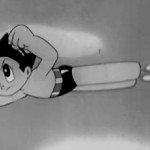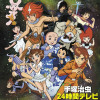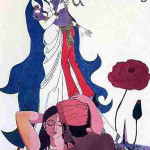About Tezuka’s Anime
Although Osamu Tezuka got his beginnings as a manga artist, in some ways it can be seen as a means to an end – and that being animation. In fact, Tezuka himself has been famously quoted as saying that while manga was his “wife”, animation was his “mistress”, and one that he simply could not stop himself from returning to.
His first foray into animation was as a story consultant to Toei Animation, during their adaptation of his manga series, Son-Goku the Monkey (1952-59) into the animated feature film known in English as Alakazam the Great (1960). Although he wasn’t directly involved in the process itself, his behind-the-scenes access to the inner workings of an animation studio gave him valuable experience in regards to both the technical process as well as the difficulties associated with working as part of a team.
Tezuka is best-known as the man responsible for kick-starting the Japanese animation industry with his Astro Boy (1963-66) animated television series. However, besides bringing such classics as Jungle Emperor (1965-66) and Princess Knight (1967-68) to life as weekly animated television programs, he has also been behind numerous full-length animated television specials, such as Undersea Super-train: Marine Express (1979) and Bagi, the Monster of Mighty Nature (1984), not to mention numerous original animation videos and animated pilots.
Always interested in pushing the envelope, over the course of his career, Tezuka also delved into animation for more adult audiences with his animated films, such as A Thousand and One Nights (1969) as well as award-winning experimental animated shorts, such as Jumping (1984). In fact, he was still working on animated projects, such as the unfinished The Legend of the Forest (1987) right up to his death, and re-imaginings of his works, such as the popular Metropolis (2001) have survived him and continue to this very day.







